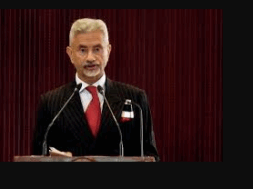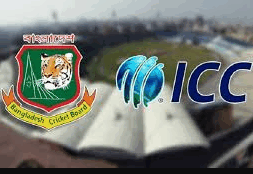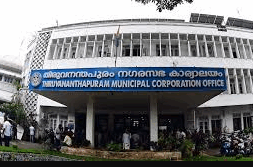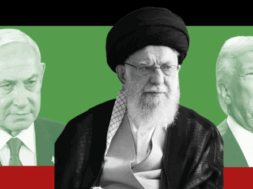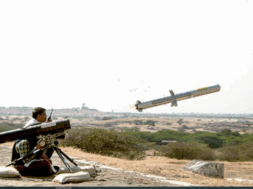
After Chief Nasrallah, another Top Hezbollah Leader Killed in Israeli Airstrike
Manas Dasgupta
NEW DELHI, Sept 29: Hezbollah on Sunday confirmed the Israeli claim that another top commander Ali Karaki died in the strike that killed Nasrallah in Lebanon. The Israeli military had earlier claimed that Karaki was killed in the strike, which targeted what the military said was an underground compound where senior Hezbollah figures were meeting.
There, however, was no immediate confirmation of another Israeli claim of killing of Nabil Kaouk, the deputy head of Hezbollah’s Central Council. The Israeli military had also claimed on Sunday about the killing of Kaouk in an airstrike in Lebanon. However, there was no immediate comment from Hezbollah and it was also not known where the strike took place.
Karaki was alongside Hezbollah chief Hassan Nasrallah, who was sheltered in a bunker when the Israeli jets bombed them on Friday. This development follows the Israeli military’s announcement of the killing of several high-ranking Hezbollah officials in a series of airstrikes.
Karaki is frequently depicted in the media as one of Hezbollah’s most influential leaders. According to the Israeli army’s organisational charts for Hezbollah’s Jihad Council, the group’s primary military body, Karaki heads the Southern Command.
These charts indicate that he operates under the direct orders of Hezbollah chief Hassan Nasrallah. Filippo Dionigi, a Hezbollah specialist at the University of Bristol, explained that this suggests Karaki likely organizes most military operations against Israel from southern Lebanon.
As head of the Southern Command, Karaki is tasked with directing the militia’s forces along Lebanon’s southern border with Israel, positioning his troops as the “first line” of defence against any potential Israeli invasion.
In recent weeks, several top Hezbollah commanders have been killed in Israeli strikes, including founding members of the group who had evaded death or detention for decades and were close to Nasrallah himself.
Hezbollah has also been targeted by a sophisticated attack on its pagers and walkie-talkies that was widely blamed on Israel. A wave of Israeli airstrikes across large parts of Lebanon has killed at least 1,030 people in less than two weeks, according to Lebanon’s Health Ministry.
The attacks have dealt a stunning succession of blows to Hezbollah after almost a year of cross-border fire, killing much of its leadership and revealing gaping security holes. Israel’s defence minister is now discussing widening the offensive.
Israel’s intensifying bombardment has increased fears the conflict could spin out of control, potentially drawing in Iran as well as the United States, Israel’s closest ally. Nasrallah’s body was recovered intact from the site of Friday’s strike, a medical source and a security source said on Sunday. Hezbollah has not yet said when his funeral will be held.
The fighting between Hezbollah and Israel, their latest round of warfare in four decades of on-off conflict, has been waged in parallel with Israel’s war in Gaza against Hamas since the Iran-backed Palestinian group’s attack on Israel last Oct. 7.
Hezbollah and Hamas are allies that consider themselves part of an Iran-backed “Axis of Resistance” against Israel. Israel has responded with waves of airstrikes, and the conflict has steadily ratcheted up to the brink of all-out war, raising fears of a region-wide conflagration.
Israel, led by its Prime Minister Benjamin Netanyahu, says it is determined to return thousands of its citizens to communities in the north that were evacuated nearly a year ago. Hezbollah has said it would only halt its rocket fire if there is a cease-fire in Gaza, which has proven elusive despite months of indirect negotiations between Israel and Hamas led by the US, Qatar and Egypt.
The details available about the airstrike that killed Nasrallah indicate that an Iranian informant reportedly provided Israel with crucial intelligence on his exact location in a bunker that led to his assassination. The informant tipped off Israeli forces about Nasrallah’s location just hours before the attack, which took place at his highly secure underground headquarters in Dahieh, a southern suburb of Beirut.
The Israeli military deployed F-35 fighter jets equipped with bunker-buster bombs, waiting in Lebanese airspace for Nasrallah’s arrival at the command centre. He was attending an emergency meeting with other senior commanders, including a member of Iran’s Quds Force, shortly after the funeral of a Hezbollah drone unit commander killed in a prior strike.
The attack involved dropping six two-ton bombs, creating a massive 30-meter-deep crater and destroying two neighbouring buildings. The explosion was reportedly heard as far away as downtown Beirut. This strike is considered one of the largest against Hezbollah since 2006 and marks a significant blow to the organization, which has gone silent following Nasrallah’s death.
Iran is now focused on helping Hezbollah regroup, including appointing a successor and rebuilding its command structure. Israel’s military claims it has eliminated eight of Hezbollah’s nine most senior military commanders this year, significantly weakening the group’s leadership. The recent attacks also included detonating explosives hidden in Hezbollah’s communication devices, injuring around 1,500 fighters.
The fighting between Hezbollah and Israel, their latest round of warfare in four decades of on-off conflict, has been waged in parallel with Israel’s war in Gaza against Hamas since the Iran-backed Palestinian group’s attack on Israel last October 7.


